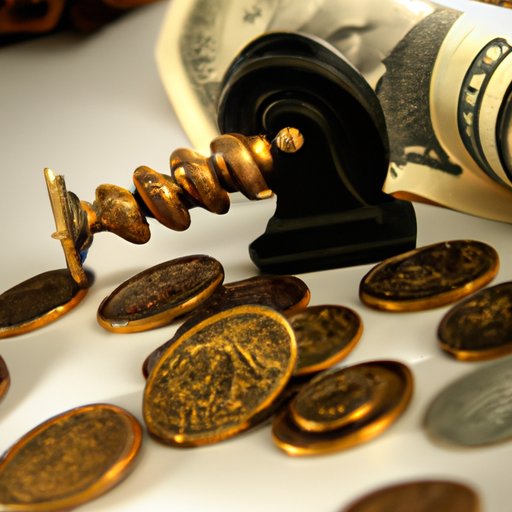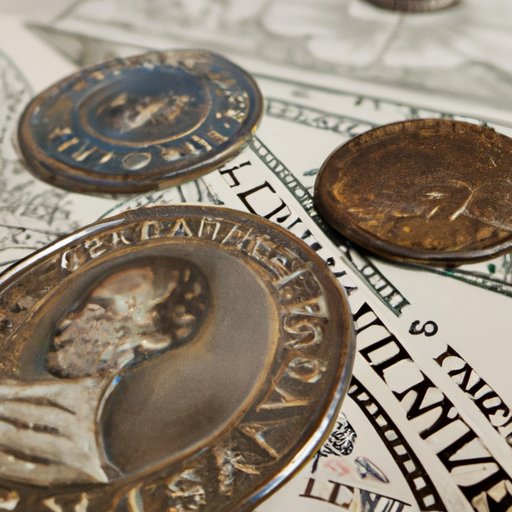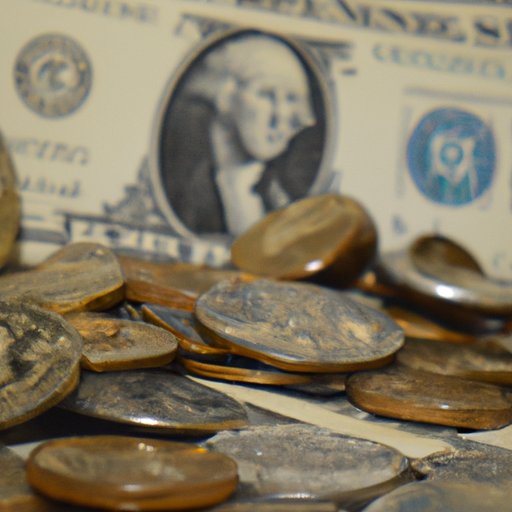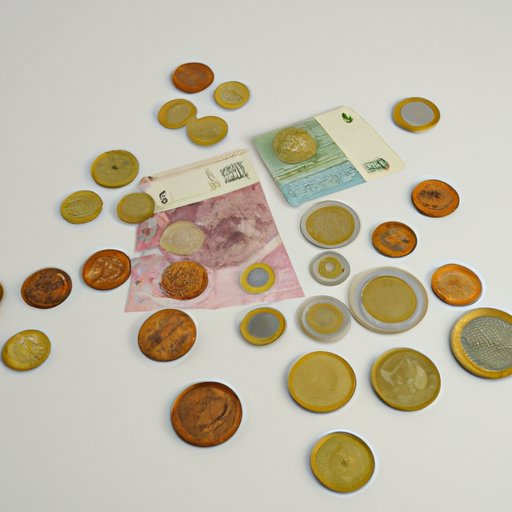Introduction
Money is an essential part of everyday life. We use it to purchase goods and services, pay bills, save for the future, and so much more. But what is money exactly? According to Investopedia, money is “anything of value that serves as a (1) generally accepted medium of financial exchange, (2) a legal tender for repayment of debt, (3) a standard of value, and (4) a unit of accounting measure”. This article will explore how money was invented, from its earliest forms of bartering and exchanging to its development into coins and paper money. It will also examine the different types of money throughout history, how money has shaped society and culture, and the impact of money on modern society.

A Historical Perspective on the Invention of Money
The invention of money can be traced back to ancient times. Before money existed, people relied on bartering and exchange as a means of obtaining goods and services. Bartering involves trading one good or service for another—for example, trading a cow for a bag of grain. This system was limited, however, as it required finding someone with something you wanted who was willing to trade for something you had. Another issue was that not all goods were equal in value—some goods were worth more than others, making them difficult to trade without some form of measurement.
Coins and currency soon emerged as a way to solve this problem. Coins were made from precious metals like gold and silver, which had intrinsic value and could be easily exchanged. The first coins appeared around 600 BC in Asia Minor and eventually spread across Europe and other parts of the world. Paper money and credit eventually replaced coins as the primary form of money, as they were easier to transport and store.
From Bartering to Coins: The Evolution of Money
The evolution of money can be divided into three distinct periods: Ancient monetary systems, early modern monetary systems, and the globalization of money. During the ancient period, bartering and exchange remained the main form of money, although certain standardized forms of payment began to emerge. For example, in Ancient Greece and Rome, pieces of bronze, iron, and copper were used as forms of currency.
During the early modern period, coins became the dominant form of money. Gold and silver coins were minted by governments and used as a form of legal tender. This period also saw the emergence of paper money and credit, which allowed for easier transportation and storage of money. Finally, the globalization of money saw the emergence of national currencies and the international flow of money.

Exploring the Different Types of Money Throughout History
Throughout history, various types of money have been used, including precious metals, commodity currencies, and fiat money. Precious metals such as gold and silver have been used as money since ancient times. They are valuable because they are rare and durable, and their value remains relatively stable over time. Commodity currencies are items that are used as a form of money because they are in demand, such as tobacco or tea. Finally, fiat money is money that is declared legal tender by a government, but is not backed by a physical commodity.

How Money Has Shaped Society and Culture
Money has had a profound effect on society and culture. It has enabled economic development and social mobility, allowing individuals to pursue opportunities that may otherwise have been unattainable. Money has also become a representation of status and power, with those who have more money often viewed as more successful and influential. This has led to the emergence of cultural representations of money, such as luxury goods, expensive cars, and lavish lifestyles.
Examining the Impact of Money on Modern Society
Today, money plays an even greater role in modern society. It is used to fund political campaigns and influence public policy, as well as to finance technological advancements and scientific research. Money is also a major factor in social inequality, with those who have access to more money often having greater opportunities for success and advancement.
Conclusion
Money has been around for centuries and has evolved over time. From bartering and exchange to coins and paper money, the invention of money has had a profound impact on society and culture. Today, money continues to shape our lives in many ways, from politics to technology to social inequality. Understanding the history of money and its various forms can help us better understand its role in modern society.
(Note: Is this article not meeting your expectations? Do you have knowledge or insights to share? Unlock new opportunities and expand your reach by joining our authors team. Click Registration to join us and share your expertise with our readers.)
